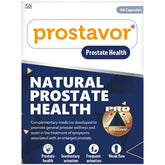Cervical screening
All adult women should undergo periodic cervical cancer screening. Screening aims to detect precancerous lesions, that is, abnormalities in the cells of the cervix, which, if left untreated, can develop into cervical cancer. When found, precancerous lesions must be treated.
Screening and treatment of precancerous lesions also referred to as “secondary prevention” is the second pillar of the recommended WHO’s comprehensive approach to cervical cancer. There are a number of recommended screening and treatment options.
- Cervical screening (a smear test) checks the health of your cervix. The cervix is the opening to your womb from your vagina.
- It's not a test for cancer, it's a test to help prevent cancer.
- All women and people with a cervix aged 25 to 64 should be invited by letter.
- During the screening appointment, a small sample of cells will be taken from your cervix.
- The sample is checked for certain types of human papillomavirus (HPV) that can cause changes to the cells of your cervix. These are called "high risk" types of HPV.
- If these types of HPV are not found, you do not need any further tests.
- If these types of HPV are found, the sample is then checked for any changes in the cells of your cervix. These can then be treated before they get a chance to turn into cervical cancer.
- You'll get your results by letter, usually in about 2 weeks. It will explain what happens next.
Cervical screening is one of the best ways to protect yourself from cervical cancer.
Cervical screening is not a test for cancer, it's a test to help prevent cancer.
How cervical screening helps prevent cancer
Cervical screening checks a sample of cells from your cervix for certain types of human papillomavirus (HPV).
These types of HPV can cause abnormal changes to the cells in your cervix and are called "high risk" types of HPV.
If these types of HPV are found during screening (an HPV positive result), the sample of cells is then checked for abnormal changes. If abnormal cells are not treated, they may turn into cervical cancer.
What is HPV?
HPV is the name for a very common group of viruses.
Most people will get some type of HPV during their lives. It is very common and nothing to feel ashamed or embarrassed about.
You can get HPV from any kind of skin-to-skin contact of the genital area, not just from penetrative sex.
This includes:
- vaginal, oral or anal sex
- any skin-to-skin contact of the genital area
- sharing sex toys
Some types of HPV (called "high risk" types) can cause cervical cancer. In most cases your body will get rid of HPV without it causing any problems. But sometimes HPV can stay in your body for a long time.
If high risk types of HPV stay in your body, they can cause changes to the cells in your cervix. These changes may become cervical cancer if not treated.
If you do not have a high risk type of HPV it is very unlikely you will get cervical cancer, even if you have had abnormal cell changes in your cervix before.
Who's at risk of cervical cancer
If you have a cervix and have had any kind of sexual contact, with a man or a woman, you could get cervical cancer. This is because nearly all cervical cancers are caused by infection with high risk types of HPV.
You can get HPV through:
- vaginal, oral or anal sex
- any skin-to-skin contact of the genital area
- sharing sex toys
You're still at risk of cervical cancer if:
- you have had the HPV vaccine – it does not protect you from all types of HPV, so you're still at risk of cervical cancer
- you have only had 1 sexual partner – you can get HPV the first time you're sexually active
- you have had the same partner, or not had sex, for a long time – you can have HPV for a long time without knowing it
- you're a lesbian or bisexual – you're at risk if you have had any sexual contact
- you're a trans man with a cervix
- you have had a partial hysterectomy that did not remove all of your cervix
If you've never had any kind of sexual contact with a man or woman, you may decide not to go for cervical screening when you are invited. But you can still have a test if you want one.
If you're not sure whether to have cervical screening, talk to your GP or nurse.
Cervical screening is a choice
It's your choice if you want to go for cervical screening. But cervical screening is one of the best ways to protect you from cervical cancer.
Risks of cervical screening
You may have some light bleeding or spotting after cervical screening. This should stop within a few hours.
If abnormal cells are found and you need treatment, there are some risks, such as:
- treating cells that may have gone back to normal on their own
- bleeding or an infection
- you may be more likely to have a baby early if you get pregnant in the future – but this is rare
How to opt out
If you do not want to be invited for screening, contact your GP and ask to be taken off their cervical screening list.
You can ask them to put you back on the list at any time if you change your mind.
When you'll be invited-Cervical screening
All women and people with a cervix between the ages of 25 and 64 should go for regular cervical screening. You'll get a letter in the post inviting you to make an appointment.
When you'll be invited for cervical screening
| Age | When you're invited |
|---|---|
| under 25 | up to 6 months before you turn 25 |
| 25 to 49 | every 3 years |
| 50 to 64 | every 5 years |
| 65 or older | only if 1 of your last 3 tests was abnormal |
You can book an appointment as soon as you get a letter.
If you missed your last cervical screening, you do not need to wait for a letter to book an appointment.
When cervical screening is not recommended
If you're under 25
You will not be invited for cervical screening until you're 25 because:
- cervical cancer is very rare in people under 25
- it might lead to having treatment you do not need – abnormal cell changes often go back to normal in younger women
If you're 65 or older
You'll usually stop being invited for screening once you turn 65. This is because it's very unlikely that you'll get cervical cancer.
You'll only be invited again if 1 of your last 3 tests was abnormal.
If you're 65 or older and have never been for cervical screening, or have not had cervical screening since the age of 50, you can ask your GP for a test.
If you have had a total hysterectomy
You will not need to go for cervical screening if you have had a total hysterectomy to remove all of your womb and cervix.
You should not receive any more screening invitation letters.
Prevention
Cervical cancer can often be prevented by having regular screenings to find any precancers and treat them, as well as receiving the HPV vaccine.
The HPV vaccine Gardasil is approved by the U.S. Food and Drug Administration (FDA) for prevention of cervical cancer caused by HPV for people between 9 and 45 years old. Gardasil 9 is available in the United States for preventing infection from HPV16, HPV18, and 5 other types of HPV linked with cancer. There were 2 other vaccines previously available in the United States: Cervarix and the original Gardasil. Both of these are no longer available in the United States. However, these vaccines may be in use outside of the United States.
To help prevent cervical cancer, ASCO recommends that girls receive HPV vaccination. Talk with a health care provider about the appropriate schedule for vaccination because it may vary based on many factors, including age and vaccine availability. Learn more about HPV vaccination and ASCO’s recommendations for preventing cervical cancer.
Additional actions people can take to help prevent cervical cancer include:
-
Delaying first sexual intercourse until the late teens or older
-
Limiting the number of sex partners
-
Practicing safe sex by using condoms and dental dams
-
Avoiding sexual intercourse with people who have had many partners
-
Avoiding sexual intercourse with people who are obviously infected with genital warts or show other symptoms
-
Quitting smoking
Screening information for cervical cancer
Screening is used to look for cancer or abnormalities that may become cancerous before you have any symptoms or signs. Scientists have developed, and continue to develop, tests that can be used to screen a person for specific types of cancer before signs or symptoms appear. The overall goals of cancer screening are to:
-
Reduce the number of people who die from the cancer, or completely eliminate deaths from cancer
-
Reduce the number of people who develop the cancer
The following tests and procedures may be used to screen for cervical cancer:
-
HPV test. This test is done on a sample of cells removed from the woman’s cervix, the same sample used for the Pap test (see below). This sample is tested for the strains of HPV most commonly linked to cervical cancer. HPV testing may be done by itself or combined with a Pap test. This test may also be done on a sample of cells collected from a woman’s vagina, which she can collect herself.
-
Pap test. The Pap test has been the most common test for early changes in cells that can lead to cervical cancer. This test is also called a Pap smear. A Pap test involves gathering a sample of cells from the cervix. It is often done at the same time as a bimanual pelvic exam as part of a gynecologic checkup. A Pap test may be combined with an HPV test.
-
Visual inspection with acetic acid (VIA). VIA is a screening test that can be done with few tools and the naked eye. During VIA, a dilution of white vinegar is applied to the cervix. The health care provider then looks for abnormalities on the cervix, which will turn white when exposed to vinegar. This screening test is very useful in places where access to medical care is limited.
Screening for cervical cancer can be done during an appointment with a primary care doctor or a gynecologic specialist. In some areas, free or low-cost screening may be available.
Screening recommendations for cervical cancer
Different organizations have looked at the scientific evidence, risks, and benefits of cervical cancer screening. These groups have developed different screening recommendations for women in the United States.
ASCO recommends that all women receive at least 1 HPV test to screen for cervical cancer in their lifetime. Ideally, women 25 to 65 years old should receive an HPV test once every 5 years. Women 65 and older or who had a hysterectomy may stop screening if their HPV test results have been mostly negative over the previous 15 years. Sometimes, women who are 65 and older and who have tested positive for HPV may continue screening until they are 70.
Decisions about screening for cervical cancer are becoming increasingly individualized. Sometimes, screening may differ from the recommendations discussed above because of a variety of factors. Such factors include your personal risk factors and your health history. It’s important to talk with your health care team or a health care professional knowledgeable in cervical cancer screening about how often you should receive screening and which tests are most appropriate.
Here are some questions to ask a health care professional:
-
At what age should I start being screened for cervical cancer?
-
Should my screening include an HPV test? If so, how often?
-
Why are you recommending these specific tests and screening schedule for me?
-
At what age could I stop being regularly screened for cervical cancer?
-
Do any recommendations change if I have had cervical dysplasia or precancer?
-
Do any recommendations change if I have HIV?
-
Do any recommendations change if I have had a hysterectomy?
-
Do any recommendations change if I am pregnant?
-
Do any recommendations change if I have had the HPV vaccine?
-
What happens if the screening shows positive or abnormal results?
All women should talk with their doctors about cervical cancer and decide on an appropriate screening schedule. For women at high risk for developing cervical cancer, screening is recommended at an earlier age and more often than for women who have an average risk of cervical cancer.
- Cervical screening
- Cervical screening myths
- Complication of Cervical screening
- Diagnosis of Cervical screening
- How is Cervical screening treated?
- Medicine for Cervical screening
- Remedies for Cervical screening
- Support for Cervical screening
- Symptoms associated with Cervical screening
- The best British Online Pharmacy
- Top 10 UK Pharmacies
- Treatment for Cervical screening
- What causes Cervical screening
- What is Cervical screening
- Where can I buy medicine for Cervical screening in the UK
- ZimSeller Pharmacy



















